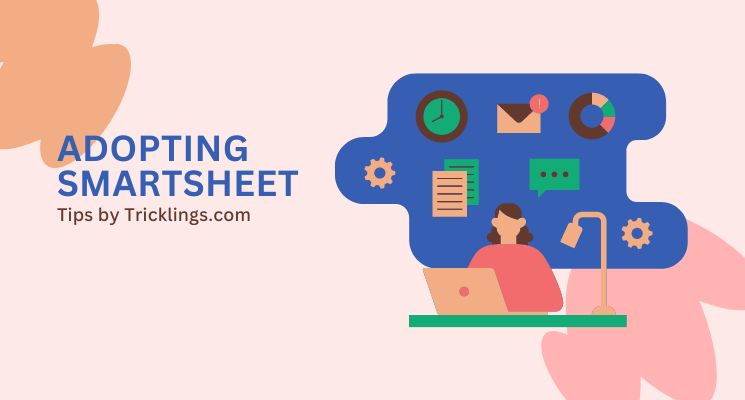The shift to Smartsheet can represent a significant advance in the way a company manages projects and workflows. From enhancing collaboration to streamlining processes, Smartsheet offers numerous benefits that can elevate organizational efficiency. However, to fully leverage this tool, businesses must approach its adoption with intention and strategy. Below, you will find essential tips and practices for integrating Smartsheet into your company’s operations effectively. Keep reading to ensure your transition is as smooth and successful as possible.
Understanding Smartsheet and Its Impact on Project Management

Medical negligence, also called clinical negligence, involves healthcare professionals breaching their duty, leading to patient harm. To make a valid claim in the UK, it must show a breach of duty, resulting harm, and owed duty of care. The ‘Bolam test’ assesses the standard of care by comparing it to accepted medical practices. Significant deviation from these norms can support a negligence claim.
Acting within the legal time limits is crucial for a Medical Negligence Claim in the UK, typically three years from the incident or harm discovery. Seeking prompt legal advice is essential to avoid missing the statute of limitations. Consulting legal experts, such as Smartsheet Experts, is necessary when suspecting medical negligence. These specialists ensure a thorough case review and uphold your rights, guiding you through the claims process for justice and compensation.
Crafting a Smartsheet Adoption Strategy for Your Team
To launch a successful Smartsheet adoption, start with a clear strategy outlining objectives such as enhanced collaboration and faster project delivery. Communicate these goals to your team for direction. Assess your team’s workflow to identify pain points and potential improvements through workshops or focus groups. Engage your team in this discovery phase to increase buy-in and gather valuable insights.
Customize Smartsheet to fit your team’s needs by creating templates, automating workflows, and integrating with other tools. Prioritize changes that will yield immediate benefits to ensure a smooth transition. Allocate resources for ongoing support and maintenance, whether through an internal champion or external experts, to address challenges swiftly and optimize productivity.
Training Employees for a Smooth Smartsheet Transition
Support your team with comprehensive Smartsheet training, catering to different learning styles and skill levels. Offer in-person sessions, webinars, and self-paced tutorials for confident navigation. Customize training materials to highlight relevant features with real-world examples. Encourage questions and interactive learning for hands-on understanding.
Implement a tiered training approach, starting with basics and progressing to advanced functions. Provide ongoing learning opportunities and refresher courses. Promote a support system where employees can help one another through dedicated forums or communities of practice.
Integrating Smartsheet with Current Business Systems

To unlock Smartsheet’s full potential, seamless integration with existing business systems is key. Begin by assessing current tools and applications in use, exploring how Smartsheet can connect with them. Integration options vary from simple data imports to advanced API connections, catering to diverse business needs. Prioritize integrations that offer immediate efficiency gains. For example, linking Smartsheet with email systems can improve communication, while CRM integration can streamline customer project management. Each integration should enhance processes without unnecessary complexity.
Maintain data consistency and integrity throughout integration and beyond. Ensure smooth data flow between systems and establish protocols for maintaining data quality. Regular audits and reviews are essential to catch any issues early and preserve data trustworthiness. Consider security implications when integrating third-party tools with Smartsheet. Prioritize data privacy and compliance with regulations. Collaborate with IT to implement appropriate security measures, ensuring secure and controlled data exchange between systems.
Measuring Success and Navigating Challenges Post-Smartsheet Implementation
To effectively gauge the impact of Smartsheet, defining key performance indicators (KPIs) is essential. Regularly reviewing these metrics allows for assessing progress and identifying areas needing improvement. Challenges post-implementation, such as user resistance or data management issues, should be promptly addressed by listening to user feedback and making iterative improvements.
Continuous feedback collection through surveys, interviews, or observations of team interactions with Smartsheet is crucial for ongoing improvement. This feedback informs future enhancements to ensure Smartsheet meets evolving needs. Long-term success with Smartsheet hinges on fostering a culture of continuous learning and adaptability, staying updated on new features and best practices for maintaining a competitive edge and maximizing platform benefits.
Altogether, transitioning to Smartsheet signifies a substantial leap towards modern project management and operational effectiveness. With a well-planned adoption approach, thorough training, and smooth integration with existing systems, your company stands to benefit from heightened productivity and collaboration. It’s a worthwhile journey that promises numerous rewards for teams ready to embrace this robust tool.












